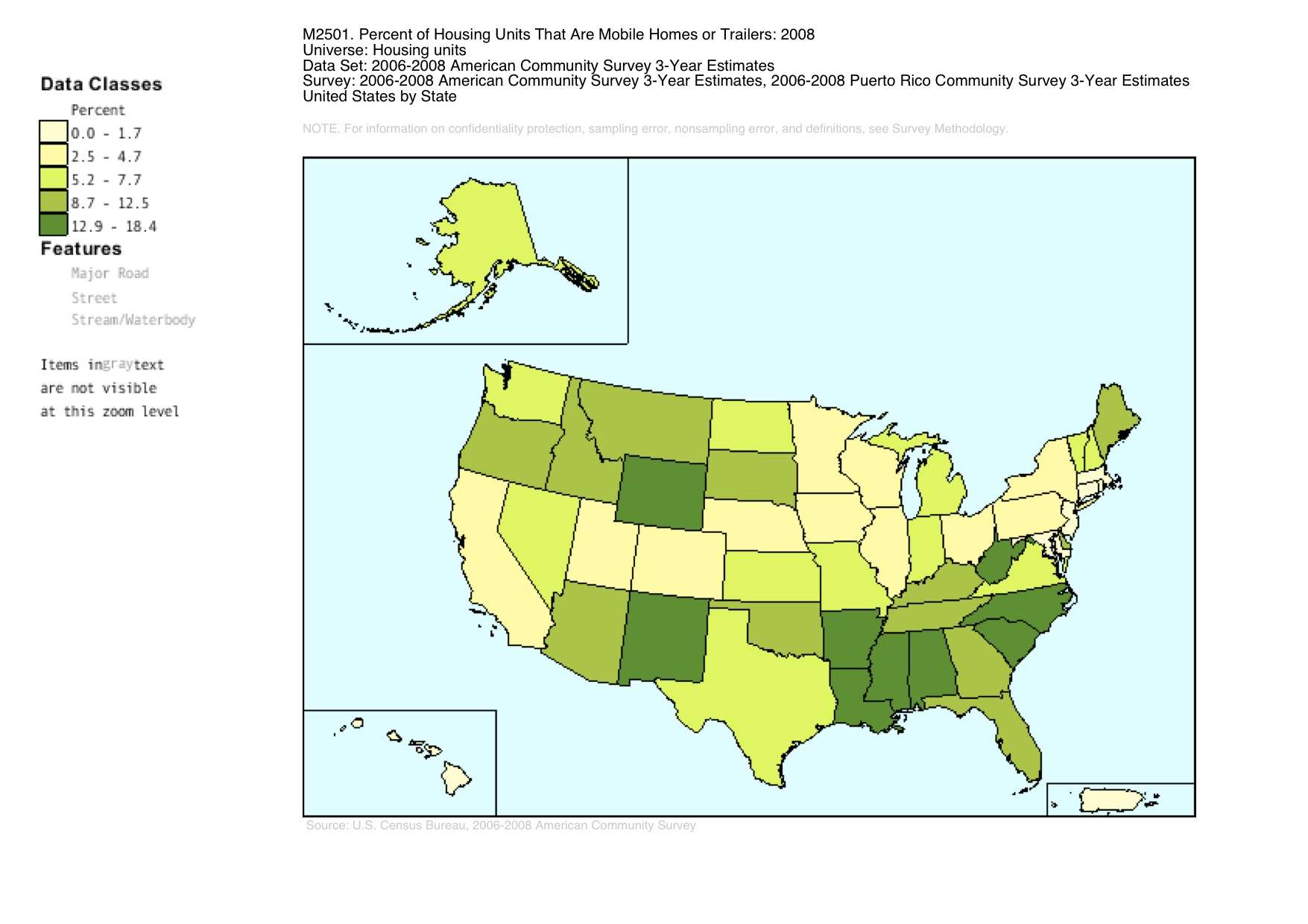Queries from the major search engines continue to land on my website and provide great topics for full-blown articles. An anonymous viewer wondered which state had the highest percentage of residents living in trailer parks. Google thought I had the answer. I didn’t. I’d never even considered it in detail before but I certainly had my preconceived notions. Now I know the facts.
The Sterotype
It wasn’t possible for me to determine the reason behind the query. Maybe it was inquisitiveness, maybe it was sarcasm, or maybe it was something else entirely. There’s often an unfavorable slant whenever residents of mobile home communities find themselves reduced to a stereotype. That’s not my intent. I wanted to see if I could find an answer purely based on curiosity once I spotted the query in my logs.

I quickly found the MHVillage website, a clearinghouse for mobile home purchases, sales and rentals. I’m a numbers person so it struck me as remarkable when I saw there were 36,246 trailer parks in the United States on the day I checked the site. That amazing. I had no idea the number would be that large.
They’re also scattered everywhere throughout the nation, even in nominally urban and suburban locations. For instance, the website led me to a trailer park just 11 miles from the White House, in Virginia’s Fairfax County, one of the most affluent in the United States (map). So much for stereotypes.
The Largest
I also attempted to find the world’s largest trailer park. I couldn’t find a definitive source but many people speculated that it might be located in Nevada.
Sun Valley is a community north of Reno with a population of around 20,000 that is composed primarily of mobile homes. World’s largest? Maybe or may not, but either way it’s gargantuan: miles and miles of trailer homes in tidy rows in the desert.
More Superlatives
All hail the U.S. Census Bureau and its American Community Survey for providing some definitive numbers. They tallied housing units by state. They even broke it down by type including mobile homes, and published the great map I’ve reproduced below. My only quibble deals with difficulties I encountered as I attempted to navigate their website. It’s not very intuitive. In fair warning, I’m not sure I could replicate what it took to find this map on their website again. I think it might have been included somewhere within its “Thematic Maps” section.

You can right click the image and open it in another window if you want to see it in a larger size. That will make it possible to read the scale and the full source citation. Essentially, the darker green a state appears, the higher the percentage of mobile homes exist there. The crown goes to South Carolina where 18.4% of the housing units in 2008 were mobile homes or trailers. Other contenders included the “usual suspects” in the American southeast.
I expect to find trailers in Mississippi, West Virginia and Arkansas — no surprise there — but what’s up with New Mexico and Wyoming? I admit to being caught off-guard by that one. Also, there’s not a single trailer in the District of Columbia? Really? None? I can’t believe that’s true. Today begins my quest to find at least one mobile home in Washington, DC.
The Answer?
Thus, South Carolina is the most direct answer to the unknown reader’s query. However that’s not the only way to examine these data. Try this: which state has the largest absolute number of trailers? That would be Florida, followed by Texas, North Carolina, California, and Georgia. There’s probably close to 900,000 mobile homes in Florida alone, assuming I mashed the numbers correctly.
Let’s take another slice. In which state would one expect to encounter trailers most frequently? It got really interesting when I examined trailers per square mile, mashing the ACS data with US National Atlas figures. The champion then becomes Delaware, followed by Florida, North Carolina and South Carolina, dropping off quickly from there. Delaware has more than twenty trailers per square mile, by far the highest density of mobile homes anywhere in the nation. Yes, Delaware.
This demonstrates clearly that statistics can be twisted in any number of different ways to support a desired answer. South Carolina. Florida. Delaware. It all depends on how one frames the question.

Leave a Reply